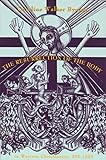The Resurrection of the body in Western Christianity, 200-1336 / Caroline Walker Bynum. [print]
Material type: TextSeries: Lectures on the history of religions ; new ser., no. 15.Publication details: New York : Columbia University Press, (c)1995.Description: xx, 368 pages : illustrations ; 24 cmContent type:
TextSeries: Lectures on the history of religions ; new ser., no. 15.Publication details: New York : Columbia University Press, (c)1995.Description: xx, 368 pages : illustrations ; 24 cmContent type: - text
- unmediated
- volume
- 9780231081269
- 9780231081276
- BT872
- BT872.B994.R478 1995
- COPYRIGHT NOT covered - Click this link to request copyright permission:
| Item type | Current library | Collection | Call number | Status | Date due | Barcode | |
|---|---|---|---|---|---|---|---|
 Circulating Book (checkout times vary with patron status)
Circulating Book (checkout times vary with patron status)
|
G. Allen Fleece Library CIRCULATING COLLECTION | Non-fiction | BT872.B96 1995 (Browse shelf(Opens below)) | Available | 31923001554340 |
Browsing G. Allen Fleece Library shelves, Shelving location: CIRCULATING COLLECTION, Collection: Non-fiction Close shelf browser (Hides shelf browser)
Introduction : seed images, ancient and modern -- Resurrection and martyrdom : the decades around 200 -- Resurrection, relic cult, and asceticism : the debates of 400 and their background -- Reassemblage and regurgitation : ideas of bodily resurrection in early scholaticism -- Psychosomatic persons and reclothed skeletons : images of resurrection in spiritual writing and iconography -- Resurrection, heresy, and burial ad Sanctos : the twelfth-century context -- Resurrection, hylomorphism, and Abundantia : scholatic debates in the thirteenth century -- Somatomorphic soul and Visio Dei : the beatific vision controversy and its background -- Fragmentation and ecstasy : the thirteenth-century context.
In The Resurrection of the Body Caroline Bynum forges a new path of historical inquiry by studying the notion of bodily resurrection in the ancient and medieval West against the background of persecution and conversion, social hierarchy, burial practices, and the cult of saints.
Examining those periods between the late second and fourteenth centuries in which discussions of the body were central to Western conceptions of death and resurrection, she suggests that the attitudes toward the body emerging from these discussions still undergird our modern conceptions of personal identity and the individual.
Bynum describes how Christian thinkers clung to a very literal notion of resurrection, despite repeated attempts by some theologians and philosophers to spiritualize the idea. Focusing on the metaphors and examples used in theological and philosophical discourse and on artistic depictions of saints, death, and resurrection, Bynum connects the Western obsession with bodily return to a deep-seated fear of biological process and a tendency to locate identity and individuality in body.
Of particular interest is the imaginative religious imagery, often bizarre to modern eyes, which emerged during medieval times. Bynum has collected here thirty-five examples of such imagery, which illuminate her discussion of bodily resurrection. With this detailed study of theology, piety, and social history, Bynum writes a new chapter in the history of the body and challenges our views on gender, social hierarchy, and difference.
COPYRIGHT NOT covered - Click this link to request copyright permission:
There are no comments on this title.




